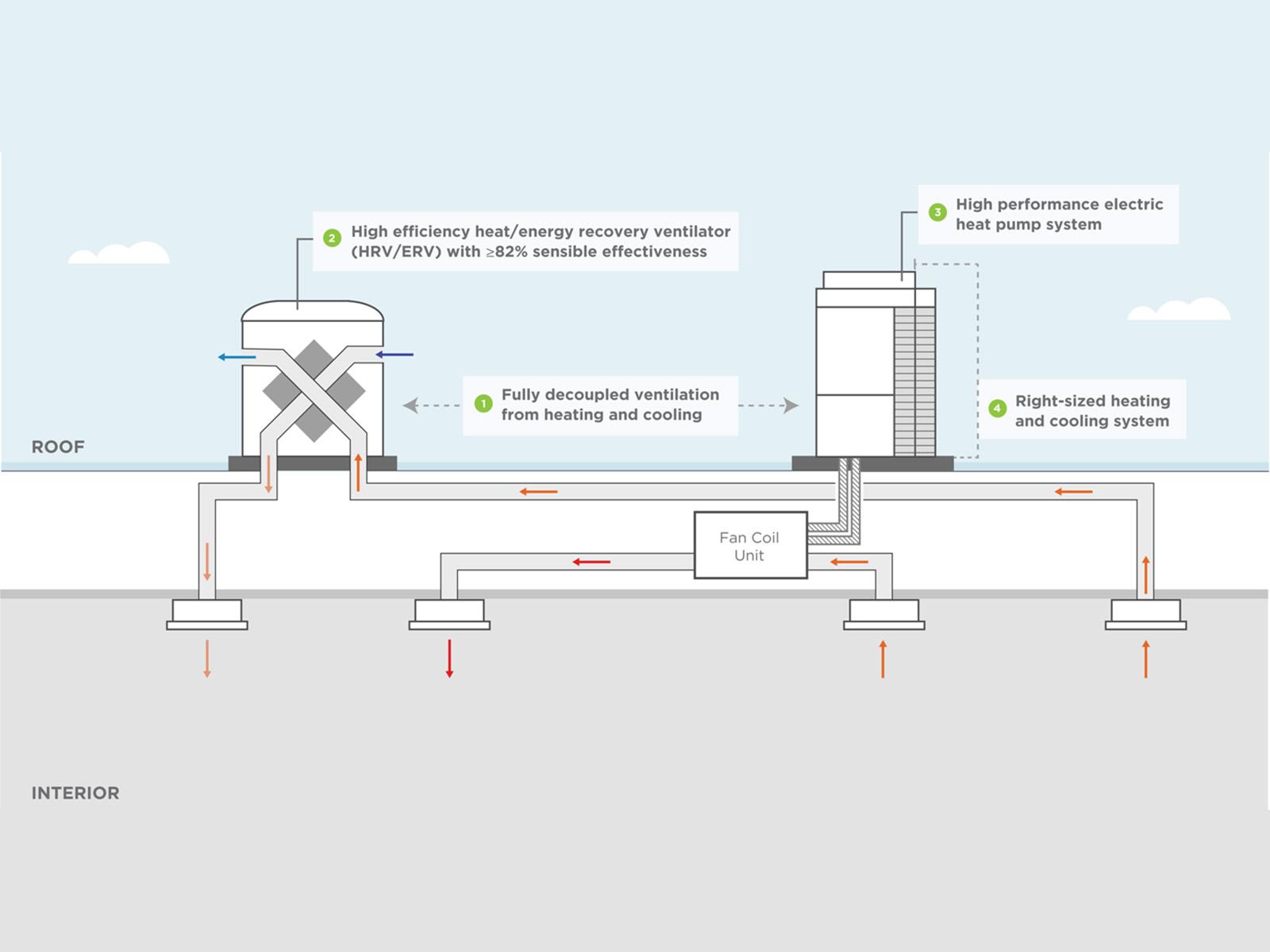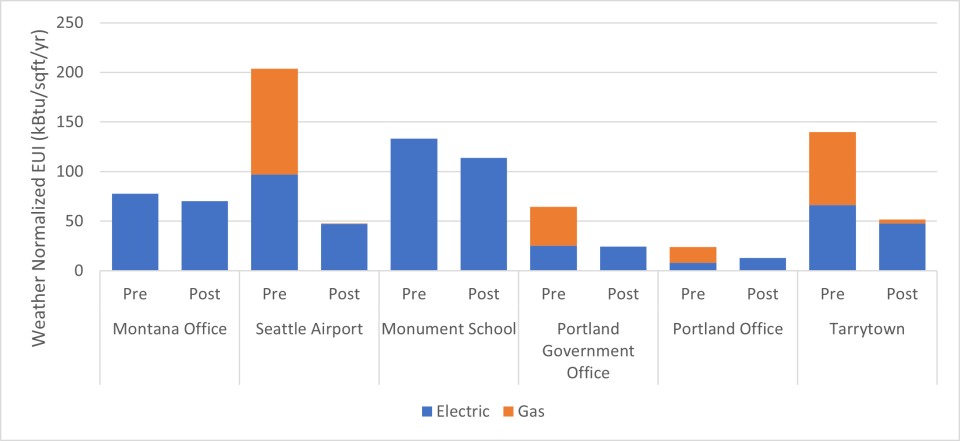Field Evaluation of Very High Efficiency Dedicated Outdoor Air Systems Finds Persistence of Savings
Field Evaluation of Very High Efficiency Dedicated Outdoor Air Systems Finds Persistence of Savings
Researchers at Pacific Northwest National Laboratory (PNNL) evaluated the long-term performance of Very High Efficiency (VHE) Dedicated Outdoor Air Systems (DOASs) installed in eight buildings.

This graphic conveys a VHE DOAS's technology components and characteristics, as they would appear on a building's rooftop. (Graphic courtesy the Northwest Energy Efficiency Alliance)
